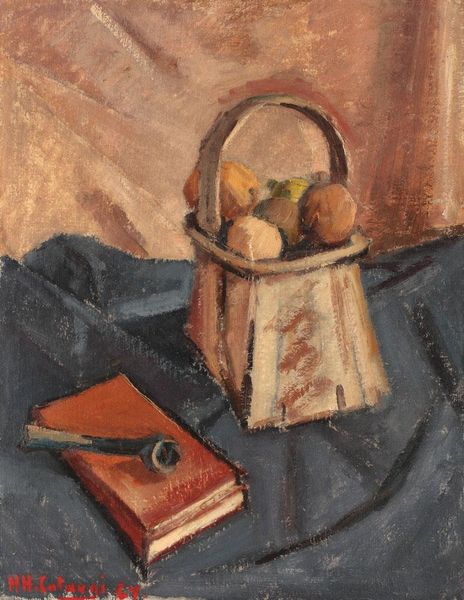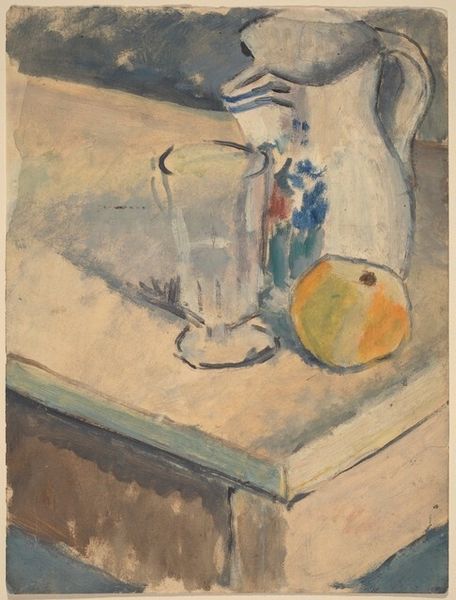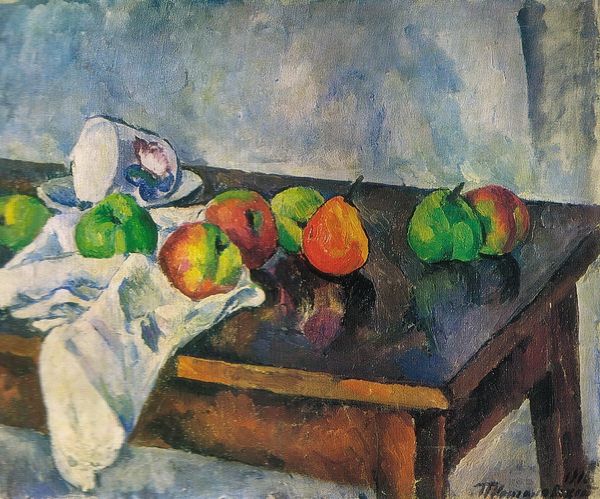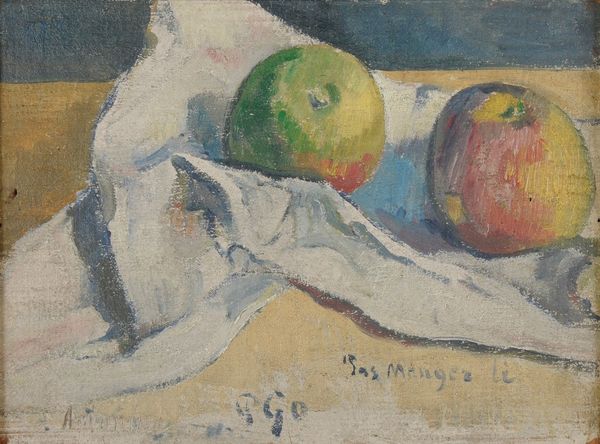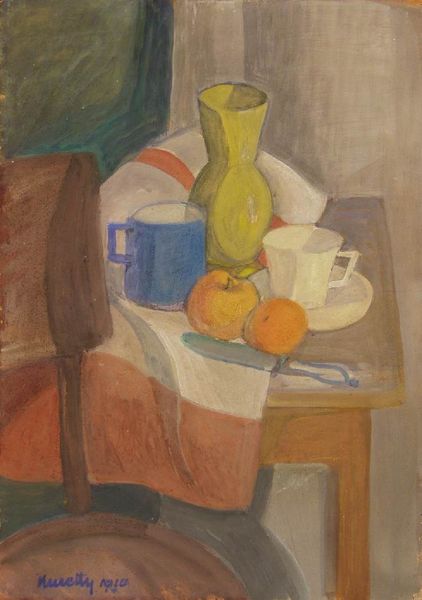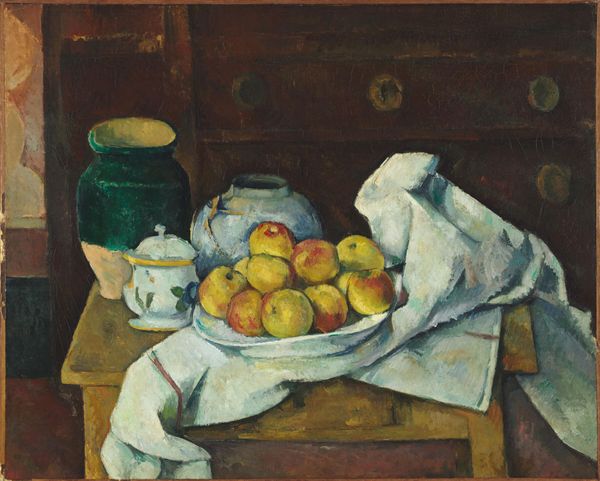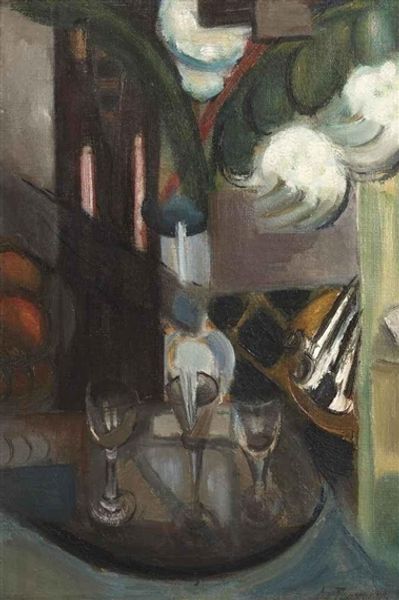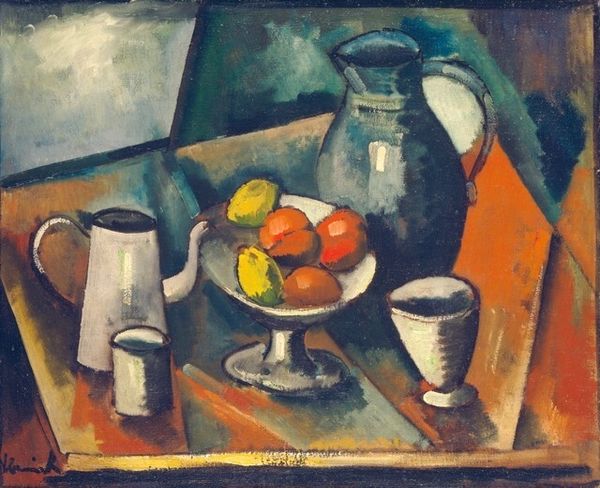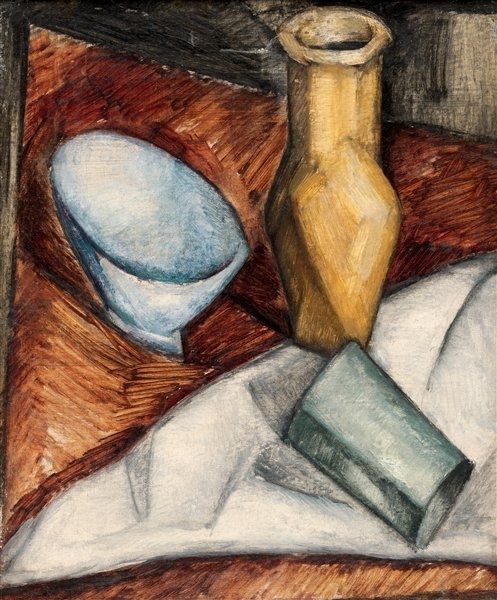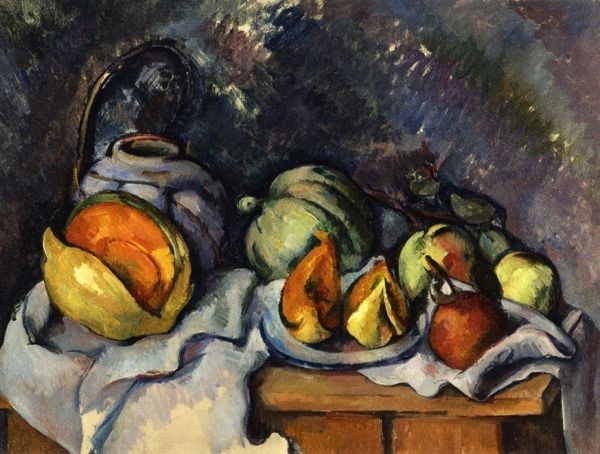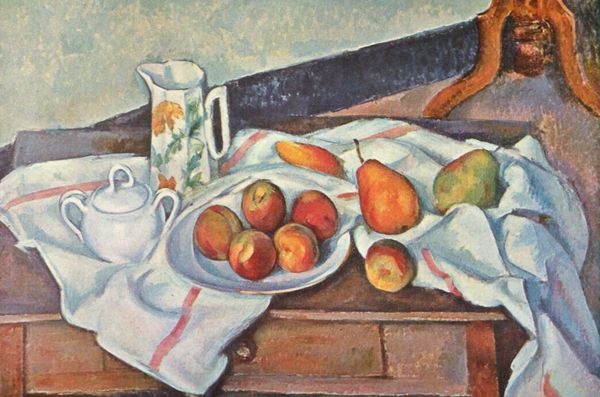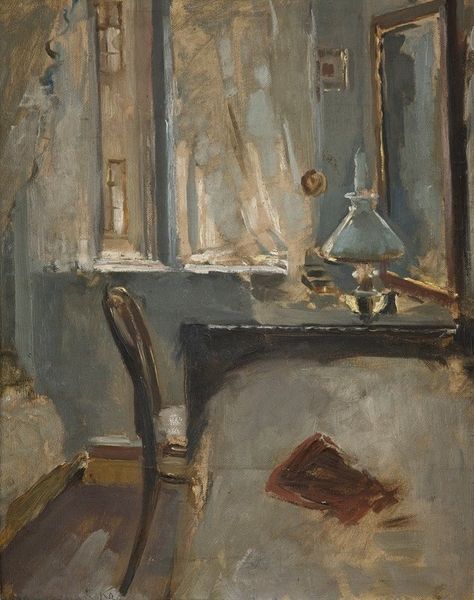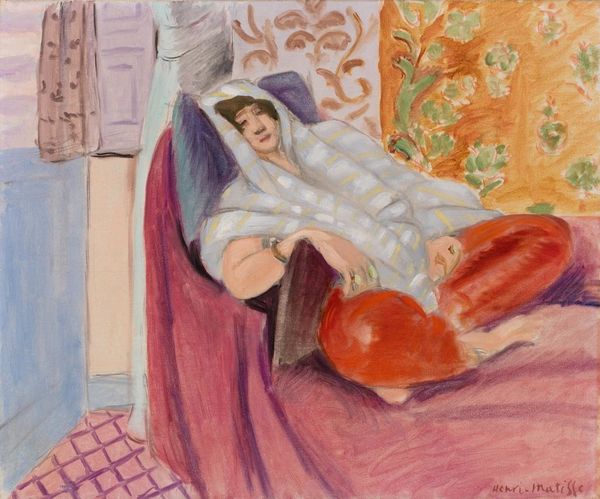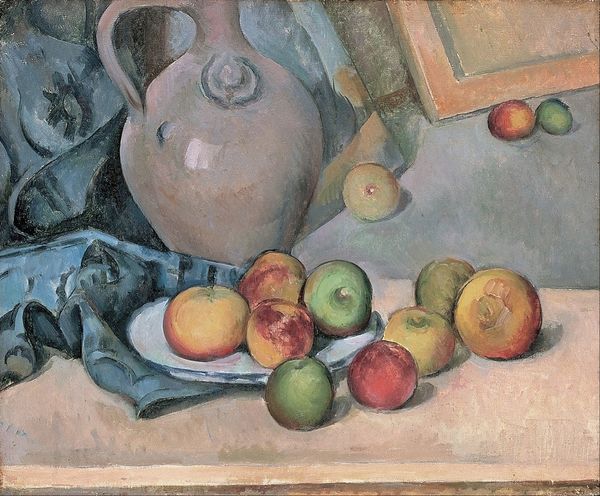
painting, oil-paint, impasto
#
painting
#
oil-paint
#
oil painting
#
impasto
#
modernism
Dimensions: overall: 40.3 x 30.2 cm (15 7/8 x 11 7/8 in.)
Copyright: National Gallery of Art: CC0 1.0
Curator: This is an untitled still life painting by Mark Rothko, likely created around 1926, using oil paint, demonstrating his engagement with modernism early in his career. Editor: My first impression is one of understated simplicity. There's a quiet, almost melancholic mood conveyed through the muted colors and the stark arrangement of the pitcher, fruit, and draped cloth. It speaks volumes with very few elements. Curator: Precisely. Considering the era and Rothko's later shift to color field abstraction, this piece provides insight into his influences and development. The way he depicts domestic objects relates, I think, to broader social discourses around labor, class, and the representation of everyday life in art during the early 20th century. What is labor in art? Editor: From a materialist perspective, I’m immediately drawn to the paint application—that impasto technique! You can practically feel the artist's hand manipulating the medium. The visible brushstrokes invite consideration of Rothko’s physical engagement, transforming mundane objects into textured, tangible forms. There is something there around the accessibility of everyday items and high art techniques blending that is interesting to me. Curator: The deliberate choice of a simple white pitcher and common fruit is fascinating. Does Rothko use the gendered history of the domestic space? It highlights accessibility, doesn't it? It almost resists the conventions of academic painting and offers the opportunity for diverse and class representation. The fruit—they are signifiers, no? What roles are they in modern culture and historical artwork? Editor: Indeed. It's about drawing value from what's readily available, transforming ordinary materials through skilled execution and intentional composition. There is even a link back to other Dutch and Spanish still life’s in the material value that the items convey in representing economic stability. Curator: Seeing it within Rothko’s broader trajectory, knowing he moved towards total abstraction, I interpret this still life as a critical grounding exercise, figuring the world around us before diving into total nothing. What can you see when stripping away all else, that tells more. What kind of stories exist with what is still standing. Editor: Absolutely, it is compelling to note the start of artistic investigations, I hadn't considered that perspective previously. This discussion encourages me to reflect more deeply on both the process and historical relevance. Curator: And for me, I'm rethinking how context profoundly shapes our understanding. I wonder how race, ethnicity, gender or sexuality inform material and subject.
Comments
No comments
Be the first to comment and join the conversation on the ultimate creative platform.
